5 simple points to organize your Customer Service
We will see the 5 key points to organize the customer service and how easy they are to implement in an automated IT tool, such as Deepser.
In a previous article we have already talked about how to start structuring the customer service efficiently. Once the process of improving your Service Desk has begun, however, doubts may arise about the most important points to be addressed.
We will follow the ITIL methodology, a set of internationally recognized best practices for the management of an IT service but extensible to all types of service.
1. ORGANIZING WORK AND TEAMS
A good Service Manager, like a good coach, has to know how to distribute the right tasks to the right people. First, define work teams and assign them the correct tasks. To help you with this, I recommend that you read this guide on ITIL, which identifies the different levels of support and their typical activities. In Deepser, creating work groups and adding operators is truly simple thanks to the group entry form:
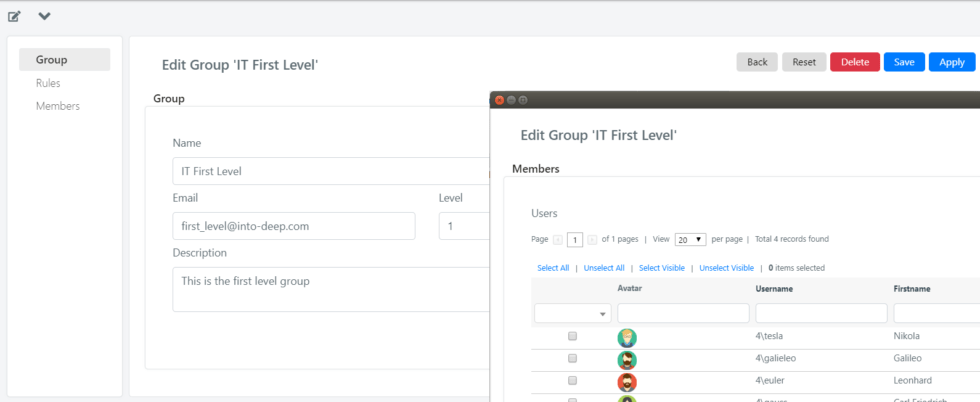
In addition, assigning a ticket or task to a team or to a specific operator is facilitated thanks to the select-box with filters, present in the request management interface:
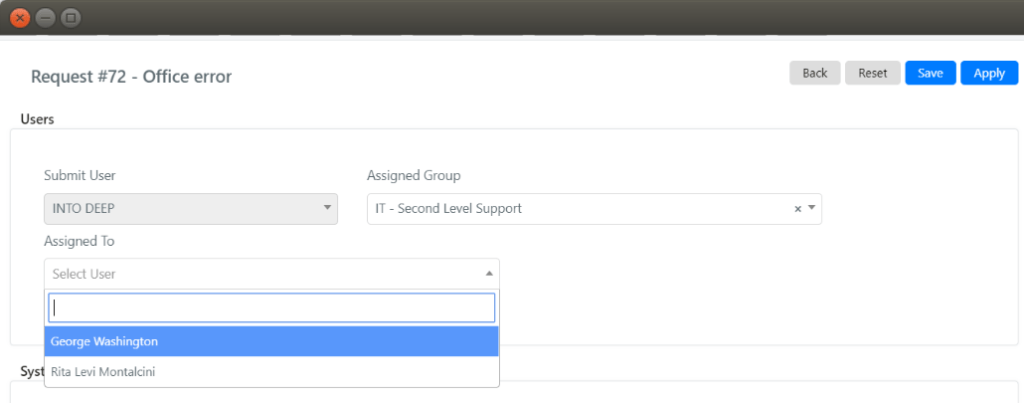
We can also implement the automatic routing mechanism to assign requests. For example, when a request is created.
2. CATEGORIZING REQUESTS
We have just introduced an important term: categories. To organize teams, it is essential to categorize customer requests. In fact, there needs be a clear division between the skills of the teams, and each category must respect the structure. If you don’t do this, you risk to attribute activities to the wrong people, with a consequent waste of time and a higher risk to have an unhappy customer. In Deepser, configuring categories is very simple, thanks to the category tree: a flexible and dynamic tool.
Assigning the visibility of categories is immediate thanks to the tree structure:
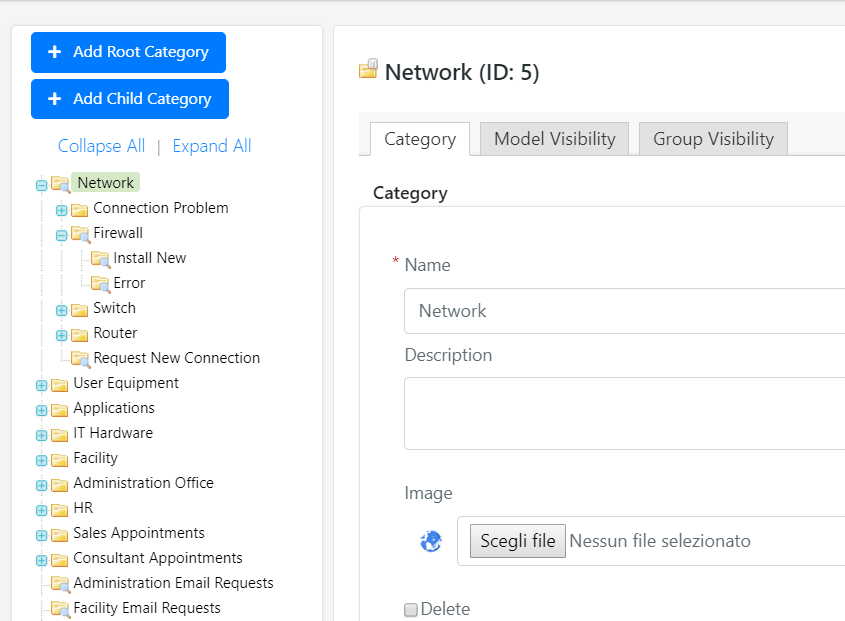
And to the visual configurator:
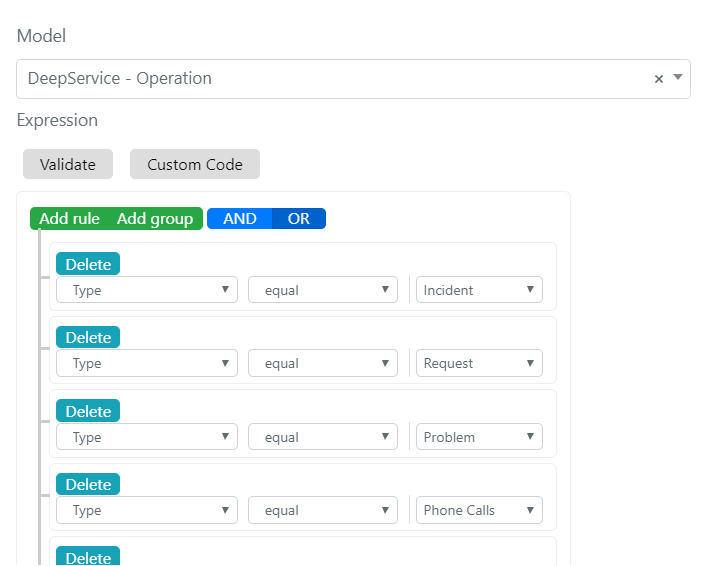
3. DEFINING TYPES OF SERVICE
In order to categorize the requests, first thing to do is defining their types.
The question is: What do we provide assistance for?Incidents. Sales. Shipping. Development of new products. Software development. And so on.
Each of these answers is a type of service.
The categories, on the other hand, are the objects for which we offer the types of service: “Cell Phone Breakdown” or “Computer Breakdown”, “T-Shirt Sales” or “Shoe Sales”. According to ITIL best practices, there are 4 basic types of service when talking about an IT office: Incident, Request, Change and Problem.
Deepser, however, is suitable for all kinds of organizations and allows to personalize the configuration of the types of service.
Configuring the types is simple. Thanks to Service Types, we also attribute to each group of users the visibility only on the Types that they need to see for their activities.
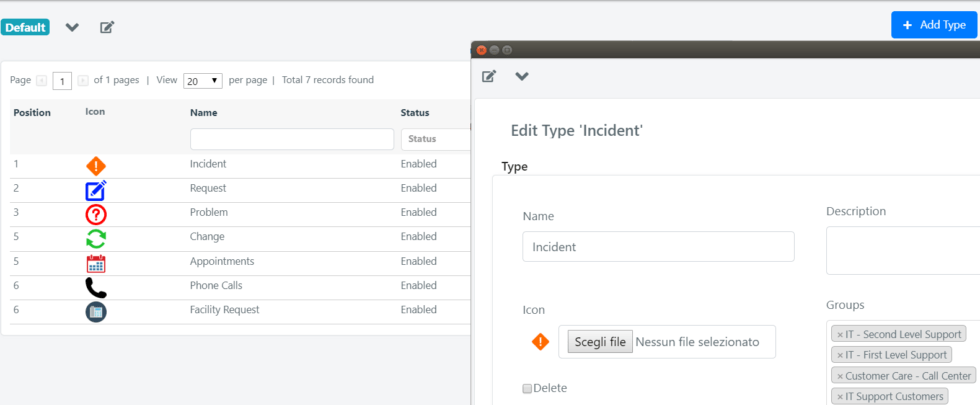
To learn more about the types of Service Operations provided by ITIL, I recommend that you read this guide.
4. MEASURING TIMES
Once we have structured teams, categories and types of service, we can start measuring.
Providing efficient assistance means, first of all, measuring the timing, to monitor the levels of service offered to the customer and the efficiency of the work teams.
Remember, If you can’t measure something, you can’t improve it, as William Thomson Kelvin said.
In Deepser, measurements are made defining work calendars, metrics and objectives to be achieved in order to always be efficient.
If you don’t know which indicators to measure, I recommend that you read this article, which talks about the fundamental KPIs recommended by ITIL.

5. PROVIDING A CUSTOMER WEB PORTAL
Last but not least, it is important to make a modern and interactive web portal available to your users, so to avoid “indiscriminate” access to our customer support services. Avoiding continuous phone calls, automatically categorizing emails arriving at the support box and offering a self-resolution tool to your users are key points for working better and providing a structured image of your service. Deepser offers an interactive and easily customizable portal, suitable for all needs.
